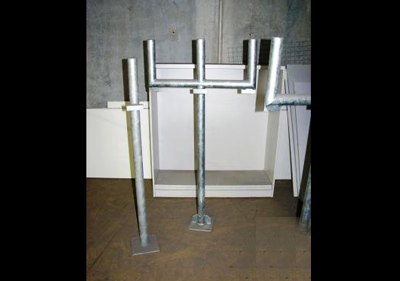Construction workers and electricians are exposed to numerous hazards. The primary risks come from use of power tools and possibility of electric shock. These could lead to severe injuries, disability or death. One of the solutions to this issue is the use of electrical lead stands in Perth. The cardinal rule is to avoid using lead particularly in wet conditions. In case this is necessary, it is essential to utilize electrical lead stands in Perth.

electrical lead stand in perth
Importance of Electrical Lead Stands in Perth
Standard electrical lead stands in Perth comply with the AS/ NZS guidelines for electrical installations in construction and demolition sites. These brackets are suitable for electric and data communications cables as well as compressed water and air hoses. Materials of electrical lead stands in Perth are non-conduction polymer insulators and galvanized steel. Polymer plastic compounds do not undergo chemical changes. These can go through heating repeatedly without negative effects or risks of electric shock.
Reliable Electrical Lead Stands in Perth
Look for suppliers or manufacturers of electrical lead stands in Perth with respectable track records. This is an indication of their product’s reliability. Majority of electrical lead stands in Perth have insulated rubber tops for additional safety. Stands usually weigh an average of nine kilograms. Only the galvanized coating makes it heavier. The purpose here is to make the frame robust enough and withstand various conditions in the construction site.
The base of electrical lead stands in Perth must be stable and flat to accommodate extra weight. These are easily detachable for transport and proper storage. Non-conductive tops made of rubber are capable of holding a maximum of five 10 to 15 electrical leads at a given time. Government regulations require electric extension wires and electrical lead stands in Perth to be above the ground in all construction areas. The guideline is for all these cable to run through stands and provide safe passageway or height clearance for all workers and vehicles. The clearance should be a minimum of two meters above the ground where personnel perform their respective tasks.
